
Today, we’re digging into a topic that’s near and dear to my heart: reading. My relationship with reading was not always simple.
Reading did not come easily for me as a child; I struggled as a student, and as a young reader. The teacher I am today has been shaped by these early school experiences. I’ve worked tirelessly throughout my career to create systems for literacy instruction that support ALL of the learners in my classroom.
All this time, extremely important work in the literacy field has been pushing its way into the forefront of the public’s attention. Educators, caregivers, and school leaders are beginning to talk about the Science of Reading. This is an important conversation to have, and I’m excited to begin these conversations here.
Unpacking the Science of Reading
This is a BIG topic, so I’ll be breaking it down over 5 blog posts. My hope is that these posts provide you with:
- a clear understanding of the basics of the Science of Reading
- resources to gather more information
- manageble ideas you can try in your classroom right away
- strategies for talking with colleagues and administrators
- support in advocating for your students and their caregivers
Before we go any further, let’s pause for a moment and address a few things. First, it is completely ok if this information is new to you! We’re all learning and like Maya Angelou says, when you know better, do better. I’ll be honest, a lot of this was new learning for me, and I’ve been trained specifically in reading. For these reasons, I felt it was so important to talk about it here.
Secondly, this topic can get very heated. Many of us did not learn about the Science of Reading in our teacher education programs. We may be required to teach reading in a way that seems in opposition to what science tells us. We may be up against uncomfortable conversations with colleagues or administrators.
This is a big topic. I really appreciate you joining me with an open mind in these conversations. Let’s dig in.
What is the Science of Reading?
The Science of Reading is a vast body of research, encompassing hundreds of studies completed over the past fifty years. This research comes from a diverse group of professionals in fields including:
- cognitive psychology
- neuroscience
- education
- special education
- linguistics
- communication sciences
- developmental psychology
These professionals have spent DECADES studying how humans learn to read. In over fifty years of studying how we learn to read, the results have not wavered. We have clear, definitive conclusions and recommendations. Subsequent research continues to point to the same things.
What Does it Say?
Ok, so the results are in, and the experts agree. What are they saying? The very short version: The research tells us reading instruction can be broken down into the “Simple View of Reading.”
The Simple View of Reading is a formula that tells us that skilled reading (the ability to read fluently and comprehend what is read) is a result of decoding AND language comprehension. People need to be able to decode the words AND have the background knowledge to understand what those words mean.
The Simple View of Reading notes that one of these skills CANNOT compensate for the other. As teachers, we have witnessed that strength in one of these areas can carry a student if they’re struggling in the other area. But that student will not be able to maintain consistent reading progress.
But wait, there’s a longer version, there’s more to this, right? Yes, there is. The Science of Reading goes further and actually tells us how people learn both of these equally important skills. Humans learn to read through explicit and systematic phonics instruction and explicit teaching in content knowledge, language, and vocabulary. Researchers have proven that what is best practice for students with dyslexia is actually best practices for all children learning to read.
We’ll dig into the specifics of what these components entail in the next post.
What Science of Reading is Not
This makes sense. But what about all of the strategies and curricula used for teaching reading? There’s so much out there! Great question. The Science of Reading does not support Whole Language, Balanced Literacy, or the Three Cueing System as strategies for teaching reading.
The Whole Language and Balanced Literacy methods come from the belief that reading is a natural process. When these strategies don’t work, we hear that students weren’t surrounded by enough books or read to enough when they were little, so there is little hope for them to learn to read. This points fingers at students’ home life or other outside factors as a determination of their ability to learn to read. These ideas are not true and do not help our students.
Unlike learning to speak when surrounded by spoken language, the Science of Reading demonstrates that reading is not actually a natural process. Humans will not simply learn to read by being surrounded by books and being read to. Yes, some students may pick reading up more easily than others. But, the Science of Reading research shows that all students benefit from explicit instruction.
Variations on the three cueing system- encouraging students to look at the picture or guess at words based on context clues or the first letter of the work- reinforce skills that will not support our students, especially as texts and content become more complex. These strategies model and teach poor reading strategies for our students.
The Science of Reading reminds us that the clues for solving the word are in the word on the page. Teaching and encouraging strategies that take our students’ attention away from the words on the page will not support the strong reading strategies that we want to teach them.
Gaining Traction
So, why are we talking about this now? Hasn’t the research been around for decades? Recently, the Science of Reading has been gaining attention for a few reasons:
The Media Limelight
First, recent reporting, articles, and publications are highlighting the Science of Reading and its impact on students and education. APM Reports, led by investigative journalist Emily Hanford has put out a series of compelling documentary-style podcast podcasts. I highly recommend these as a starting point for a deeper dive into the Science of Reading.
The Data Doesn’t Lie
Secondly, we cannot overlook the success observed in districts that have implemented Science of Reading-aligned practices and training for teachers. There are a number of states and districts across the country that have taken the leap and fully embraced the Science of Reading. These states and districts have trained their teachers in best practices or even shifted teacher training at the college level to align with the Science of Reading. The results are striking and students are making incredible, measurable progress in reading. In 2019, Mississippi, for example, after implementing a law requiring schools to teach reading based on the Science of Reading, saw reading scores jump to first in the nation.
Meeting the Needs of All Students
Lastly, but absolutely not least, many caregivers of students with dyslexia and other reading struggles have been fiercely advocating for their children. Caregivers are digging into the space between what their children need to learn to read and what schools are providing to all children. They are finding some major discrepancies: reading curricula and practices in some schools and districts are not sufficiently teaching strong reading skills to all students, including their own children with dyslexia or other reading learning differences. As these caregivers advocate for their own children, they are highlighting the need for reading instruction that meets the needs of all learners.
Many of our reading instruction practices and curricula, even if they claim to be research-based, are not providing students with the tools, skills, and strategies they need to be strong readers. In fact, just the opposite is happening, they are teaching poor reading skills, which, when emulated, continue a cycle of unsuccessful reading strategies.
Why Does This Matter Now?
There are SO many reasons to look carefully at the Science of Reading now!
- Reading scores across the country (on standardized testing) are declining. These trends in reading scores across all demographics are causing some districts and policy leaders to rethink reading instruction in schools.
- Kids (across all social-economic statuses, races, and backgrounds) are not learning to read at a proficient level. This does not just affect “certain” kids, and cannot be blamed on not being surrounded by enough books at home as young children.
- Large numbers of incarcerated people are not able to read at a proficient level. Data shows a connection between low literacy rates, dropping out of school, and incarceration. Additionally, nearly half( 48% ) of all incarcerated people have some degree of dyslexia.
- We are seeing striking improvements in reading scores across ALL demographics from schools, districts, and states where teachers are trained in the Science of Reading.
- Lastly, it’s a matter of equity- ALL students deserve to learn the strategies to become strong readers. ALL students can learn to read; the research tells us how.
What’s Next?
So we know the problem, and we have the research that shows how to address reading instruction. How do we get from point A to point B? Providing proven, research-based literacy instruction to all of our students is a first step in leveling the playing field.
We can shift away from strategies that:
- rely on guessing
- assume background knowledge
- hope that our students will eventually pick up the skills they need to read
These strategies only help that tiny sliver of the population of students for whom reading may come naturally or those students with immense outside support.
There is a body of research that tells us how students learn to read and highlights best practices for teaching reading. Why wouldn’t we want to give all of our students the skills they need to develop strong reading skills? We can shift towards strategies that focus on:
- explicit, systematic phonics instruction and fluency work
- language, vocabulary, and background knowledge
When it comes to reading instruction, I’m looking at curriculum and practices through the lens of equity and advocacy. This impacts all of our students. I want to offer support to you as you navigate understanding what the Science of Reading can look like in your classroom. I look forward to continuing this journey with you.
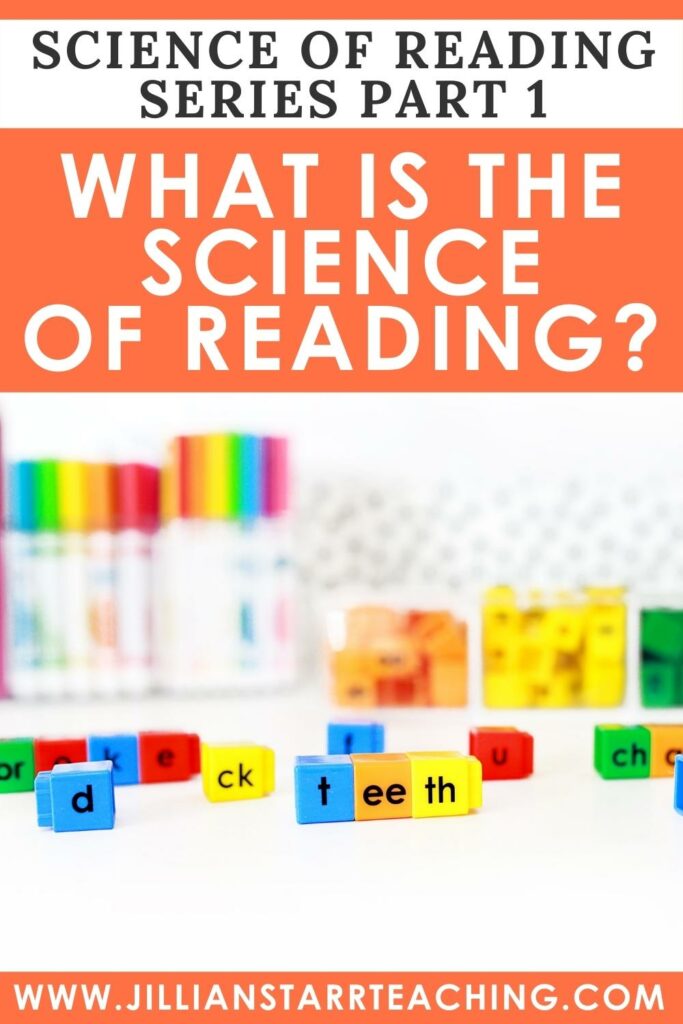

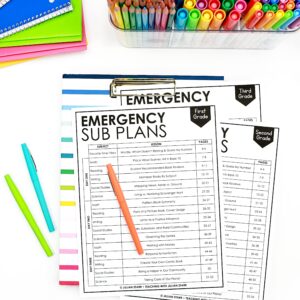

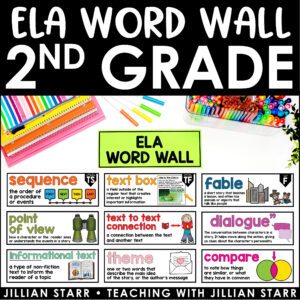
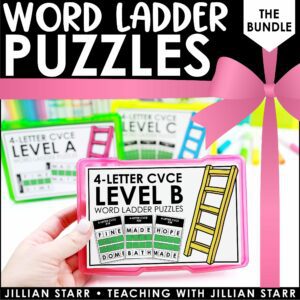
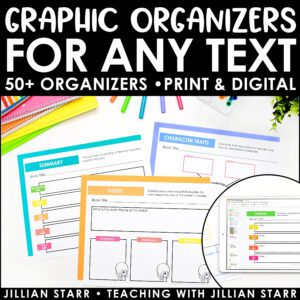

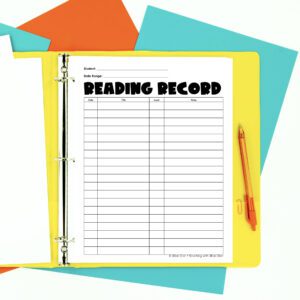



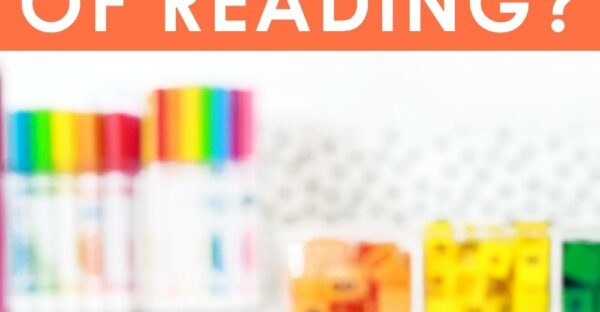
Beautifully written and well-researched! I get nervous when I hear someone wants to talk about SoR, but this was a great overview.
Keep the SOR topic going!! I’m new to SOR, been a balanced lit teacher for 19 years and have NEVER seen such growth in my students as I have this year with just trying out SOR practices. I’m addicted!! I just need to get our reading specialists (who work with our most at risk kiddos) to switch to SOR.
Great overview and very interested in learning more! Our district is embracing it but only some teachers in my district(at my school especially) are starting to really talk about it. I’m fully on board, I would just like to know more and have our district step up and begin helping us implement this into our classrooms! Communication is lacking from above us in our district unfortunately. I would love to be trained and get immersed in this knowledge for the sake of students! They do ALL deserve to know how to read. I’m hopeful we begin to become more informed so that we can actually do better for our students. Thank you for sharing all of this!
Thank you so much for this – it is only in the last few months I have been hearing about SoR, but have felt very overwhelmed and really don’t know where to begin. I think I may have found my starting point.
I’m excited to keep reading your posts. The Kindergarten and First grade teachers in my district are being trained in SoR this year. I’m up for training next year (3rd grade), but am super curious and annoyed at having to wait! Thank you for helping me get background knowledge and prepared for this training.
Our district has given teachers classes and train in the LETRS program. This truly makes sense as to why there needs to be a change.
I can’t even love this enough. THANK YOU, Jillian, for taking the time to put together such thoughtful and well-researched posts. You are a light!
A well organized post with an easy to understand description of the science of reading! The more I read on this topic, the more I feel this is something I knew all along and just now has a name and published research to back it.
Finally catching up on these posts now that summer is here.
Jillian, you are remarkable. The way you synthesize so much information into this format is beyond helpful!
Thank you for sharing your learning with us. I am excited to look through your links here and read the rest of the posts on this series to learn more!